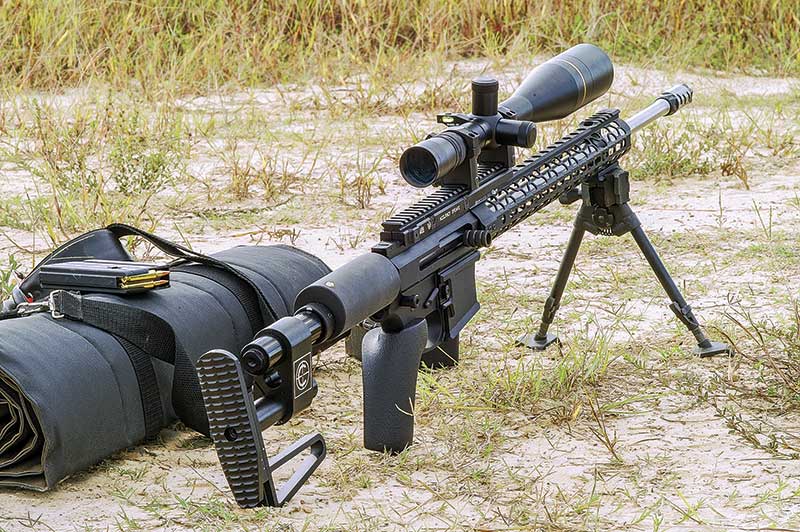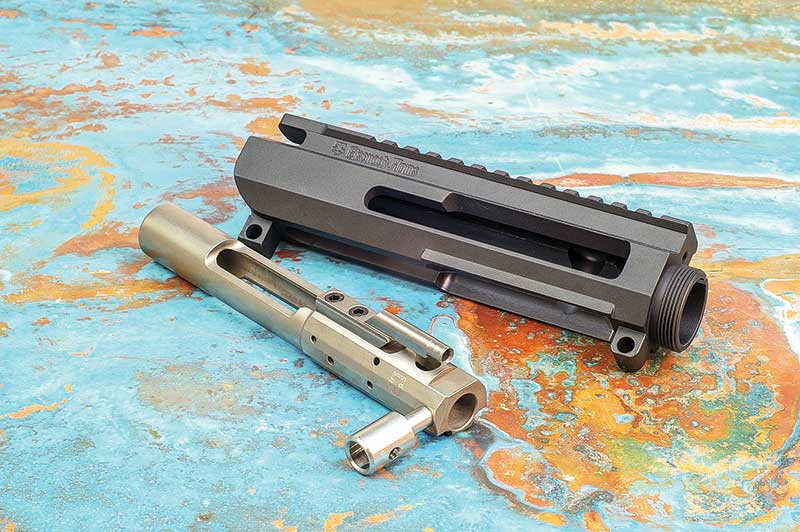Side-Charged ARs
Not for everybody?
I have long been a user and fan of the “side-charge” AR-platform upper receiver configuration when I can use it. Short course: a side-charge upper fits best into a “precision”-use AR-15 rifle package but can have other applications as well. Here’s all about what — and why — it is.
I don’t think anybody really likes the conventional T-handle charging system. It’s awkward to reach and likewise awkward to manipulate so side-charge systems eliminate the need for the standard charging handle.
To get the T-handle gone, there’s a hole drilled and tapped into the bolt carrier, into which is threaded a bolt knob then the upper receiver gets a channel milled out to provide rearward clearance for the bolt knob shaft to travel. Simple.
However, there’s not much metal to work with at the point where the handle is attached into the bolt carrier body — it’s a thin wall which means a very short threaded section on the attachment piece, making it not nearly as secure as I’d like it to be.
An overriding hitch is the (real) possibility the handle will loosen during firing. If this happens the handle could then come off and said flying handle could then hit you in the noggin, which would then hurt said noggin. I’ve not had it happen but I also habitually give mine a snug down prior to, and every now-and-again during, use. There are also varying takes on how best to secure attachment of the handle. I favor those who use something involving a “wrench” — some I’ve seen are hand-tight-only.
Beginnings
The side-charge was born from competitive shooting, NRA High Power Rifle specifically, by and for those using AR-platform Match Rifles (which can be fairly free form). Why? The main reason was the T-handle set a height limit on the elevation of the stock top line. The handle has to be free to retract fully to load the rifle, and there’s barely any space between the bottom of the handle and the top line of a standard A1 or A2 stock. This made it impossible to add adjustable cheekpieces to get the most from the AR platform. The sight mounting height is naturally higher in the first place. Adding a side-charging handle removed all restrictions on the height of the stock top line.
The result of a side-charge and an adjustable stock (with a properly located cheekpiece) is a better fit, a better shooting position, a higher score — all good.
Why Do It?
Running a rifle from prone or bench top, I like the side-charge because it’s just plain easier to operate. There’s no awkward shifting the gun around and reaching in to retract the bolt carrier. This is an especially noticeable help if you’re running a substantial optic and even more with an adjustable stock. The handle is just right there at the “front” of the receiver. It’s a simple and patently distraction-free effort to load and unload the gun as the shooter doesn’t have to shift away from position.
Other advantages to this system also include removing the functional need for forward assist. There’s debate respecting the need for this in the first place, but having a bolt knob out there means either closing or opening the bolt is straightforward. This has application for a hunter who might want to stoke up the chamber more quietly, and it’s decidedly easier to clear a jam. Resolving a feeding/extraction problem is fast and easy — just yank or bang.
Detriments
Side-charge may not be for every application — it may not be the right setup for a high-fire-volume user. There is a potential it could loosen and detach. Such a situation, in my experience, would likely be the result of quite (quite) a lot of rounds fired, but…. Moreover, the side-charge knob is sticking out there and it’s a snag-grabber. The handle also has to be removed to remove the bolt carrier for cleaning.
The main objection I’d put up on behalf of a hard-use operative is the overall sturdiness because there is no doubt the knob attachment point is prone to breakage. However, a side-charge can operate in a conventional set-up using the standard charging handle, which can remain in place if desired.
Availability
As with many of the now-standard AR-15 “premium” components, the side-charge upper systems were first custom-built but now are commonly available boxed and ready to ship from a few different sources. Even better, they’ve become affordable — some are not much, if any, more expensive than a routine upper/bolt-carrier-group combination package. In addition, many are now proprietary in design, meaning they are not modified uppers but engineered from the get-go to be side-charge.
Editors note: This article is a specially-adapted excerpt from Glen’s new book “America’s Gun: The Practical AR15.”






